My
List |
Addition Date
|
Target
|
Mission
|
Instrument
|
Size
|

|
2024-01-30 |
Europa
|
Europa Clipper
|
|
7591x5829x3 |
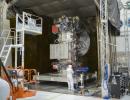
|
-
PIA26061:
-
Europa Clipper With Instruments Aboard
Full Resolution:
TIFF
(119.7 MB)
JPEG
(5.408 MB)
|

|
2024-03-08 |
Europa
|
Europa Clipper
|
|
8272x6200x3 |
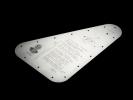
|
-
PIA26062:
-
Europa Clipper's 'Golden Record'
Full Resolution:
TIFF
(25.45 MB)
JPEG
(1.807 MB)
|

|
2024-03-08 |
Europa
|
Europa Clipper
|
|
7661x5742x3 |
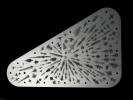
|
-
PIA26063:
-
Europa Clipper's 'Water Words'
Full Resolution:
TIFF
(45.55 MB)
JPEG
(2.922 MB)
|

|
2024-03-27 |
Europa
|
Europa Clipper
|
|
6200x8272x3 |

|
-
PIA26064:
-
Europa Clipper Prepares for Test in Space Simulator
Full Resolution:
TIFF
(92.94 MB)
JPEG
(3.43 MB)
|

|
2024-03-27 |
Europa
|
Europa Clipper
|
|
8256x5504x3 |
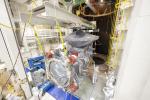
|
-
PIA26065:
-
Europa Clipper Rolls Into Thermal Vacuum Testing
Full Resolution:
TIFF
(114 MB)
JPEG
(5.705 MB)
|

|
2024-04-11 |
Europa
|
Europa Clipper
|
|
8272x6200x3 |

|
-
PIA25319:
-
Explaining the Science of Europa
Full Resolution:
TIFF
(121.7 MB)
JPEG
(5.543 MB)
|

|
2024-04-11 |
Europa
|
Europa Clipper
|
|
8256x5504x3 |
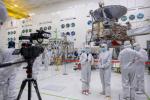
|
-
PIA26291:
-
JPL Shows Off Europa Clipper in the Clean Room
Full Resolution:
TIFF
(113.2 MB)
JPEG
(4.755 MB)
|

|
2024-04-11 |
Europa
|
Europa Clipper
|
|
7071x5300x3 |
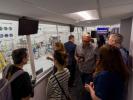
|
-
PIA26292:
-
A View of Europa Clipper From Above
Full Resolution:
TIFF
(90.36 MB)
JPEG
(3.553 MB)
|

|
2024-08-27 |
Europa
|
Europa Clipper
|
|
1920x1280x3 |
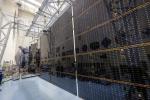
|
-
PIA26066:
-
Testing Europa Clipper's Solar Arrays
Full Resolution:
TIFF
(7.203 MB)
JPEG
(507.3 kB)
|

|
2024-08-27 |
Europa
|
Europa Clipper
|
|
1280x1920x3 |

|
-
PIA26067:
-
Europa Clipper Solar Arrays Stowed for Launch
Full Resolution:
TIFF
(6.854 MB)
JPEG
(456.5 kB)
|

|
2024-08-27 |
Europa
|
Europa Clipper
|
|
3840x2160x3 |
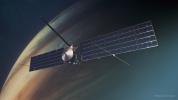
|
-
PIA26068:
-
Europa Clipper Artist's Concept
Full Resolution:
TIFF
(19.04 MB)
JPEG
(749.3 kB)
|

|
2024-09-09 |
Europa
|
Europa Clipper
|
|
3840x2160x3 |
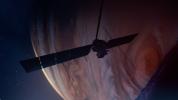
|
-
PIA26431:
-
Europa Clipper in the Shadow of Jupiter (Artist's Concept)
Full Resolution:
TIFF
(24.14 MB)
JPEG
(999.4 kB)
|

|
2024-09-09 |
Europa
|
Europa Clipper
|
|
2666x1500x3 |
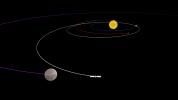
|
-
PIA26432:
-
Europa Clipper's Looping Journey to Jupiter (Artist's Concept)
Full Resolution:
TIFF
(550.2 kB)
JPEG
(105.7 kB)
|

|
2024-09-09 |
Europa
|
Europa Clipper
|
|
1921x1080x3 |
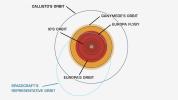
|
-
PIA26436:
-
Europa Clipper's Elliptical Orbit
Full Resolution:
TIFF
(605.2 kB)
JPEG
(105.8 kB)
|

|
2024-09-09 |
Europa
|
Europa Clipper
|
|
2550x2700x3 |

|
-
PIA26438:
-
Europa's Mysterious Interior (Artist's Concept)
Full Resolution:
TIFF
(12.34 MB)
JPEG
(469.9 kB)
|

|
2024-09-09 |
Europa
|
Europa Clipper
|
|
3840x2160x3 |
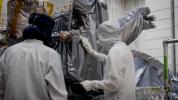
|
-
PIA26440:
-
Keeping Europa Clipper Clean
Full Resolution:
TIFF
(20.63 MB)
JPEG
(576.4 kB)
|

|
2024-09-09 |
Europa
|
Europa Clipper
|
|
3840x2160x3 |
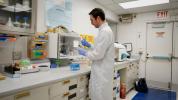
|
-
PIA26441:
-
Preparing for Planetary Protection Analysis
Full Resolution:
TIFF
(19.82 MB)
JPEG
(542.6 kB)
|

|
2024-09-10 |
Europa
|
Europa Clipper
|
|
3840x2160x3 |
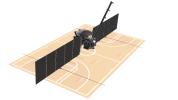
|
-
PIA26433:
-
Europa Clipper: NASA's Largest Planetary Spacecraft (Artist's Concept)
Full Resolution:
TIFF
(2.324 MB)
JPEG
(268.2 kB)
|

|
2024-09-10 |
Europa
|
Europa Clipper
|
|
1921x1081x3 |
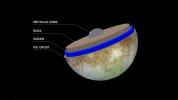
|
-
PIA26434:
-
Europa's Mysterious Interior (Artist's Concept)
Full Resolution:
TIFF
(1.076 MB)
JPEG
(92.32 kB)
|

|
2024-11-26 |
Europa
|
Europa Clipper
|
|
1920x1080x3 |
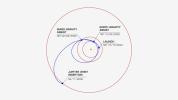
|
-
PIA26435:
-
Europa Clipper's Trajectory to Jupiter
Full Resolution:
TIFF
(345.7 kB)
JPEG
(87.15 kB)
|

|
2024-09-10 |
Europa
|
Europa Clipper
|
|
3841x2161x3 |
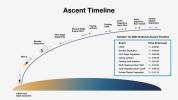
|
-
PIA26437:
-
Europa Clipper Launch Ascent Timeline
Full Resolution:
TIFF
(2.266 MB)
JPEG
(368.4 kB)
|

|
2024-09-10 |
Europa
|
Europa Clipper
|
|
3841x4320x3 |

|
-
PIA26439:
-
Europa Clipper: Equipped for Discovery (Artist's Concept)
Full Resolution:
TIFF
(5.712 MB)
JPEG
(617.2 kB)
|

|
2024-09-18 |
Europa
|
Europa Clipper
|
|
3840x2160x3 |
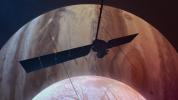
|
-
PIA26442:
-
Europa Clipper Spies Jupiter and Europa (Artist's Concept)
Full Resolution:
TIFF
(24.89 MB)
JPEG
(796.9 kB)
|

|
2024-09-18 |
Europa
|
Europa Clipper
|
|
3840x2160x3 |
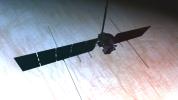
|
-
PIA26443:
-
Europa Clipper Zooms Over Its Target of Study (Artist's Concept)
Full Resolution:
TIFF
(22.53 MB)
JPEG
(807.4 kB)
|

|
2024-09-18 |
Europa
|
Europa Clipper
|
|
1000x1000x3 |
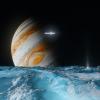
|
-
PIA26444:
-
Europa Clipper Explores an Icy Ocean World (Artist's Concept)
Full Resolution:
TIFF
(2.276 MB)
JPEG
(90.42 kB)
|

|
2024-09-18 |
Europa
|
Europa Clipper
|
|
1000x1000x3 |
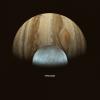
|
-
PIA26445:
-
Europa Clipper Approaches Its Target (Artist's Concept)
Full Resolution:
TIFF
(1.862 MB)
JPEG
(89.79 kB)
|

|
2024-10-11 |
Europa
|
Europa Clipper
|
|
3840x2160x3 |
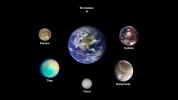
|
-
PIA26103:
-
Icy Moons in Our Solar System That May Have Oceans Now
Full Resolution:
TIFF
(4.458 MB)
JPEG
(307.2 kB)
|

|
2024-10-11 |
Europa
|
Europa Clipper
|
|
920x913x3 |
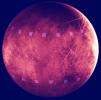
|
-
PIA26105:
-
Simulated View of Thermal Emissions from Europa
Full Resolution:
TIFF
(2.325 MB)
JPEG
(85.95 kB)
|

|
2024-10-11 |
Europa
|
Europa Clipper
|
|
4200x3319x3 |
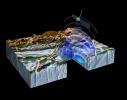
|
-
PIA26106:
-
How REASON Will Penetrate Europa's Surface (Artist's Concept)
Full Resolution:
TIFF
(15.87 MB)
JPEG
(661.2 kB)
|

|
2024-10-11 |
Europa
|
Europa Clipper
|
|
3000x3000x3 |
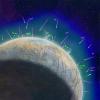
|
-
PIA26107:
-
Creation of Europa's Atmosphere (Artist's Concept)
Full Resolution:
TIFF
(27.01 MB)
JPEG
(1.102 MB)
|

|
2024-10-11 |
Europa
|
Europa Clipper
|
|
3840x2160x3 |
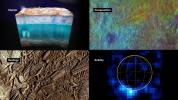
|
-
PIA26461:
-
Science Objectives of NASA's Europa Clipper Mission
Full Resolution:
TIFF
(20.62 MB)
JPEG
(919.2 kB)
|

|
2024-10-11 |
Europa
|
Europa Clipper
|
|
1103x669x3 |
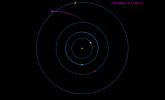
|
-
PIA26463:
-
Portion of Europa Clipper's Tour at Jupiter (Animation)
Full Resolution:
TIFF
(126.1 kB)
JPEG
(34.54 kB)
|

|
2024-10-14 |
Europa
|
Europa Clipper
|
|
8272x6200x3 |

|
-
PIA26422:
-
Europa Clipper Launch Team at JPL's Mission Control
Full Resolution:
TIFF
(141 MB)
JPEG
(6.777 MB)
|

|
2023-11-15 |
Europa
|
Europa Lander
|
Landing System
|
1743x1019x3 |
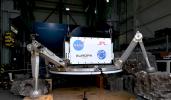
|
-
PIA26010:
-
Testing Hardware for Potential Future Landing on Europa
Full Resolution:
TIFF
(3.768 MB)
JPEG
(185.6 kB)
|

|
2024-01-17 |
Europa
|
Europa Lander
|
Landing System
|
4032x3024x3 |

|
-
PIA26198:
-
Engineers Prepare Europa Lander Landing Gear for Test
Full Resolution:
TIFF
(32.87 MB)
JPEG
(1.417 MB)
|

|
2024-01-17 |
Europa
|
Europa Lander
|
Landing System
|
1670x935x3 |
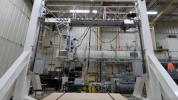
|
-
PIA26199:
-
Testing a Landing Gear for Potential Future Landing on Europa
Full Resolution:
TIFF
(4.183 MB)
JPEG
(224.1 kB)
|

|
2024-01-17 |
Europa
|
Europa Lander
|
Landing System
|
1670x935x3 |
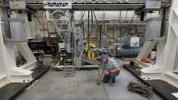
|
-
PIA26200:
-
System Checkouts on Testbed for Europa Lander Landing Gear
Full Resolution:
TIFF
(4.207 MB)
JPEG
(232.5 kB)
|

|
1996-01-29 |
Jupiter
|
Galileo
|
Solid-State Imaging
|
1600x1250x1 |
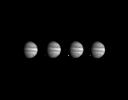
|
-
PIA00139:
-
Comet Shoemaker-Levy 9 Fragment W Impact With Jupiter
Full Resolution:
TIFF
(93.2 kB)
JPEG
(37.14 kB)
|

|
1996-06-06 |
Ganymede
|
Galileo
|
Solid-State Imaging
|
825x825x1 |

|
-
PIA00273:
-
Optical Navigation Image of Ganymede
Full Resolution:
TIFF
(6.779 kB)
JPEG
(9.291 kB)
|

|
1997-09-07 |
Io
|
Galileo
|
Solid-State Imaging
|
2340x1475x3 |
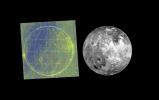
|
-
PIA00274:
-
Io Glowing in the Dark
Full Resolution:
TIFF
(1.414 MB)
JPEG
(208.6 kB)
|

|
1997-09-07 |
Europa
|
Galileo
|
Solid-State Imaging
|
793x794x3 |
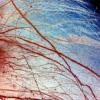
|
-
PIA00275:
-
Europa In Color
Full Resolution:
TIFF
(2.331 MB)
JPEG
(142.2 kB)
|

|
1997-09-07 |
Ganymede
|
Galileo
|
Solid-State Imaging
|
526x797x1 |

|
-
PIA00276:
-
Ganymede - Ridges, Grooves, Craters and Smooth Areas of Uruk Sulcus Region
Full Resolution:
TIFF
(530 kB)
JPEG
(153.1 kB)
|

|
1997-09-07 |
Ganymede
|
Galileo
|
Solid-State Imaging
|
1105x798x1 |
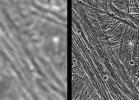
|
-
PIA00277:
-
Ganymede - Comparison of Voyager and Galileo Resolution
Full Resolution:
TIFF
(718.2 kB)
JPEG
(148.5 kB)
|

|
1997-09-07 |
Ganymede
|
Galileo
|
Solid-State Imaging
|
640x480x1 |
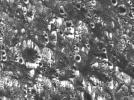
|
-
PIA00278:
-
Ganymede - Dark Terrain in Galileo Regio
Full Resolution:
TIFF
(286.6 kB)
JPEG
(60.72 kB)
|

|
1997-09-07 |
Ganymede
|
Galileo
|
Solid-State Imaging
|
574x798x1 |

|
-
PIA00279:
-
Ganymede - Ancient Impact Craters in Galileo Regio
Full Resolution:
TIFF
(526.2 kB)
JPEG
(169.6 kB)
|

|
1997-09-07 |
Ganymede
|
Galileo
|
Solid-State Imaging
|
544x796x1 |

|
-
PIA00280:
-
Ganymede - Mixture of Terrains and Large Impact Crater in Uruk Sulcus Region
Full Resolution:
TIFF
(479.4 kB)
JPEG
(135.4 kB)
|

|
1997-09-07 |
Ganymede
|
Galileo
|
Solid-State Imaging
|
1443x1656x1 |

|
-
PIA00281:
-
Ganymede - Galileo Mosaic Overlayed on Voyager Data in Uruk Sulcus Region
Full Resolution:
TIFF
(2.27 MB)
JPEG
(406.5 kB)
|

|
1997-09-08 |
Io
|
Galileo
|
Solid-State Imaging
|
700x800x3 |

|
-
PIA00282:
-
Io - Full Disk Centered on Media Regio
Full Resolution:
TIFF
(275.2 kB)
JPEG
(15.88 kB)
|

|
1997-09-07 |
Europa
|
Galileo
|
Solid-State Imaging
|
968x452x1 |
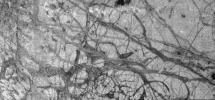
|
-
PIA00291:
-
Europa's Broken Ice
Full Resolution:
TIFF
(367.8 kB)
JPEG
(81.92 kB)
|

|
1997-09-08 |
Io
|
Galileo
|
Solid-State Imaging
|
2600x1150x3 |
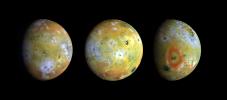
|
-
PIA00292:
-
Three Views of Io
Full Resolution:
TIFF
(3.931 MB)
JPEG
(118.1 kB)
|

|
1997-09-10 |
Io
|
Galileo
|
Solid-State Imaging
|
1775x1300x3 |
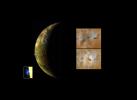
|
-
PIA00293:
-
Eruption on Io
Full Resolution:
TIFF
(1.322 MB)
JPEG
(59.83 kB)
|

|
1997-09-07 |
Europa
|
Galileo
|
Solid-State Imaging
|
1070x868x1 |
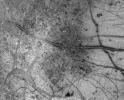
|
-
PIA00294:
-
Europa's Active Surface
Full Resolution:
TIFF
(732.4 kB)
JPEG
(161.1 kB)
|

|
1998-03-26 |
Europa
|
Galileo
|
Solid-State Imaging
|
1903x1864x1 |
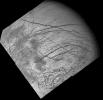
|
-
PIA00295:
-
Dark Bands on Europa
Full Resolution:
TIFF
(2.465 MB)
JPEG
(494.4 kB)
|

|
1997-09-07 |
Jupiter
|
Galileo
|
Solid-State Imaging
|
1024x2048x3 |

|
-
PIA00296:
-
Jupiter's Great Red Spot
Full Resolution:
TIFF
(1.712 MB)
JPEG
(59.1 kB)
|

|
1997-09-07 |
Jupiter
|
Galileo
|
Solid-State Imaging
|
1400x900x1 |
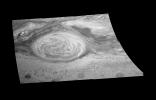
|
-
PIA00488:
-
Great Red Spot Mosaic - Near-infrared Filter
Full Resolution:
TIFF
(506.6 kB)
JPEG
(76.3 kB)
|

|
1997-09-07 |
Jupiter
|
Galileo
|
Solid-State Imaging
|
2100x1200x3 |
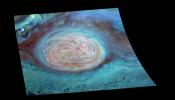
|
-
PIA00489:
-
False Color Mosaic Great Red Spot
Full Resolution:
TIFF
(4.767 MB)
JPEG
(167.5 kB)
|

|
1997-09-07 |
Jupiter
|
Galileo
|
Solid-State Imaging
|
1546x1127x1 |
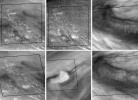
|
-
PIA00490:
-
Features of Jupiter's Great Red Spot
Full Resolution:
TIFF
(716.7 kB)
JPEG
(157.4 kB)
|

|
1997-09-07 |
Io
|
Galileo
|
Solid-State Imaging
|
2000x2000x3 |
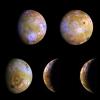
|
-
PIA00491:
-
Five Color Views of Io
Full Resolution:
TIFF
(4.97 MB)
JPEG
(155.9 kB)
|

|
1997-09-07 |
Ganymede
|
Galileo
|
Solid-State Imaging
|
2470x2110x1 |
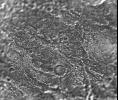
|
-
PIA00492:
-
Galileo Regio Mosaic - Galileo over Voyager Data
Full Resolution:
TIFF
(4.43 MB)
JPEG
(703.3 kB)
|

|
1997-09-07 |
Ganymede
|
Galileo
|
Solid-State Imaging
|
1665x1882x1 |

|
-
PIA00493:
-
Uruk Sulcus Mosaic - Galileo over Voyager Data
Full Resolution:
TIFF
(2.82 MB)
JPEG
(463.6 kB)
|

|
1997-11-18 |
Io
|
Galileo
|
Solid-State Imaging
|
798x787x3 |
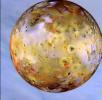
|
-
PIA00494:
-
Io in front of Jupiter
Full Resolution:
TIFF
(2.13 MB)
JPEG
(88.84 kB)
|

|
1997-11-18 |
Io
|
Galileo
|
Solid-State Imaging
|
1215x729x3 |
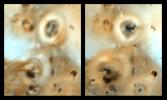
|
-
PIA00495:
-
Changing volcanoes on Io
Full Resolution:
TIFF
(2.377 MB)
JPEG
(60.55 kB)
|

|
1997-11-18 |
Ganymede
|
Galileo
|
Solid-State Imaging
|
400x400x1 |
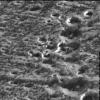
|
-
PIA00496:
-
Ice-frosted crater tops on Ganymede
Full Resolution:
TIFF
(162.4 kB)
JPEG
(31.02 kB)
|

|
1997-11-18 |
Ganymede
|
Galileo
|
Solid-State Imaging
|
560x905x1 |

|
-
PIA00497:
-
Ganymede's Nippur Sulcus
Full Resolution:
TIFF
(481.5 kB)
JPEG
(99.55 kB)
|

|
1997-11-18 |
Ganymede
|
Galileo
|
Solid-State Imaging
|
1920x1080x3 |
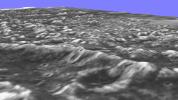
|
-
PIA00498:
-
Stereo View of Ganymede's Galileo Regio
Full Resolution:
TIFF
(2.399 MB)
JPEG
(178.4 kB)
|

|
1998-03-26 |
Ganymede
|
Galileo
|
Near Infrared Mapping Spectrometer
|
1950x1500x3 |
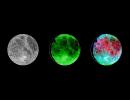
|
-
PIA00500:
-
NIMS Ganymede Surface Map
Full Resolution:
TIFF
(1.156 MB)
JPEG
(170.1 kB)
|

|
1998-03-26 |
Jupiter
|
Galileo
|
Near Infrared Mapping Spectrometer
|
233x506x3 |

|
-
PIA00501:
-
NIMS Spectral Maps of Jupiter's Great Red Spot
Full Resolution:
TIFF
(261.8 kB)
JPEG
(14.41 kB)
|

|
1997-11-18 |
Europa
|
Galileo
|
Solid-State Imaging
|
2000x1000x3 |
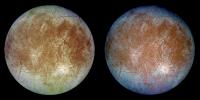
|
-
PIA00502:
-
Natural and False Color Views of Europa
Full Resolution:
TIFF
(4.733 MB)
JPEG
(264.2 kB)
|

|
1997-09-08 |
Jupiter
|
Galileo
|
Solid-State Imaging
|
700x800x3 |

|
-
PIA00506:
-
Thunderheads on Jupiter
Full Resolution:
TIFF
(1.007 MB)
JPEG
(63.96 kB)
|

|
1997-12-18 |
Callisto
|
Galileo
|
Solid-State Imaging
|
400x400x1 |
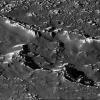
|
-
PIA00514:
-
A Chain of Impact Craters on Callisto
Full Resolution:
TIFF
(130.1 kB)
JPEG
(38.08 kB)
|

|
1997-12-18 |
Callisto
|
Galileo
|
Solid-State Imaging
|
400x400x1 |
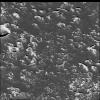
|
-
PIA00516:
-
Callisto's Valhalla Impact Structure
Full Resolution:
TIFF
(134.4 kB)
JPEG
(40.1 kB)
|

|
1997-12-18 |
Callisto
|
Galileo
|
Solid-State Imaging
|
1757x1905x1 |

|
-
PIA00517:
-
Asgard Impact Structure on Callisto
Full Resolution:
TIFF
(2.379 MB)
JPEG
(585.5 kB)
|

|
1997-12-18 |
Europa
|
Galileo
|
Solid-State Imaging
|
800x800x1 |
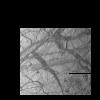
|
-
PIA00518:
-
Ridges on Europa
Full Resolution:
TIFF
(340.1 kB)
JPEG
(84.9 kB)
|

|
1997-12-16 |
Ganymede
|
Galileo
|
|
2667x2000x3 |
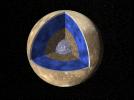
|
-
PIA00519:
-
Ganymede G1 & G2 Encounters - Interior of Ganymede
Full Resolution:
TIFF
(5.694 MB)
JPEG
(624.6 kB)
|

|
1998-03-26 |
Io
|
Galileo
|
Near Infrared Mapping Spectrometer
|
1900x1300x3 |
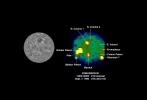
|
-
PIA00520:
-
NIMS: hotspots on Io during G2
Full Resolution:
TIFF
(541 kB)
JPEG
(103.4 kB)
|

|
1997-11-18 |
Ganymede
|
Galileo
|
Solid-State Imaging
|
1920x1080x3 |
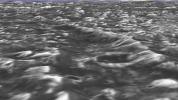
|
-
PIA00521:
-
Stereo View of Ganymede's Galileo Region
Full Resolution:
TIFF
(2.568 MB)
JPEG
(204.6 kB)
|

|
1997-12-18 |
Jupiter
|
Galileo
|
Solid-State Imaging
|
820x1440x3 |

|
-
PIA00522:
-
Jupiter Stratospheric Haze Comparison
Full Resolution:
TIFF
(1.985 MB)
JPEG
(77 kB)
|

|
1997-12-18 |
Io
|
Galileo
|
Solid-State Imaging
|
800x800x1 |
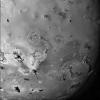
|
-
PIA00536:
-
Geologic Landforms on Io
Full Resolution:
TIFF
(685.5 kB)
JPEG
(126.1 kB)
|

|
1997-12-18 |
Io
|
Galileo
|
Solid-State Imaging
|
493x493x1 |
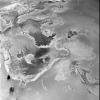
|
-
PIA00537:
-
Volcanically Active Regions on Io
Full Resolution:
TIFF
(259 kB)
JPEG
(45.96 kB)
|

|
1998-03-26 |
J Rings
|
Galileo
|
Solid-State Imaging
|
1108x300x1 |

|
-
PIA00538:
The Main Ring of Jupiter (clear filter)
Full Resolution:
TIFF
(108.3 kB)
JPEG
(11.91 kB)
|

|
1998-03-06 |
Europa
|
Galileo
|
Solid-State Imaging
|
1248x800x1 |
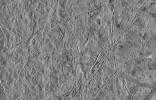
|
-
PIA00539:
-
Jupiter's Icy Satellite Europa
Full Resolution:
TIFF
(974.9 kB)
JPEG
(140.6 kB)
|

|
1998-03-06 |
Europa
|
Galileo
|
Solid-State Imaging
|
1200x800x1 |
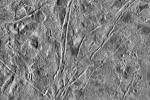
|
-
PIA00540:
-
Flows on Europa
Full Resolution:
TIFF
(1 MB)
JPEG
(124 kB)
|

|
1998-03-06 |
Europa
|
Galileo
|
Solid-State Imaging
|
880x396x1 |
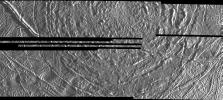
|
-
PIA00541:
-
Macula on Europa
Full Resolution:
TIFF
(297.3 kB)
JPEG
(93.49 kB)
|

|
1998-03-06 |
Europa
|
Galileo
|
Solid-State Imaging
|
725x398x1 |
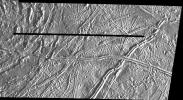
|
-
PIA00542:
-
Prominent Doublet Ridges on Europa
Full Resolution:
TIFF
(265.3 kB)
JPEG
(84.95 kB)
|

|
1998-03-06 |
Europa
|
Galileo
|
Solid-State Imaging
|
730x1410x1 |

|
-
PIA00543:
-
Structurally Complex Surface of Europa
Full Resolution:
TIFF
(722.6 kB)
JPEG
(156.3 kB)
|

|
1998-03-06 |
Europa
|
Galileo
|
Solid-State Imaging
|
1410x912x1 |
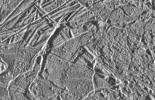
|
-
PIA00544:
-
Ridges on Europa
Full Resolution:
TIFF
(1.338 MB)
JPEG
(167.7 kB)
|

|
1997-12-18 |
Jupiter
|
Galileo
|
Solid-State Imaging
|
625x685x3 |

|
-
PIA00548:
-
False Color Mosaic of Jupiter's Belt-Zone Boundary
Full Resolution:
TIFF
(1.141 MB)
JPEG
(37.28 kB)
|

|
1997-12-18 |
Callisto
|
Galileo
|
Solid-State Imaging
|
1088x585x1 |
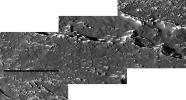
|
-
PIA00549:
-
Callisto Crater Chain Mosaic
Full Resolution:
TIFF
(350.5 kB)
JPEG
(119.5 kB)
|

|
1997-12-18 |
Jupiter
|
Galileo
|
Solid-State Imaging
|
758x1028x1 |

|
-
PIA00560:
-
Aurora Borealis on Jupiter
Full Resolution:
TIFF
(400.7 kB)
JPEG
(80.66 kB)
|

|
1997-12-18 |
Callisto
|
Galileo
|
Solid-State Imaging
|
2130x1065x1 |
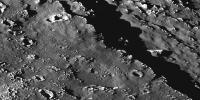
|
-
PIA00561:
-
Callisto Scarp Mosaic
Full Resolution:
TIFF
(1.373 MB)
JPEG
(292.2 kB)
|

|
1997-12-18 |
Callisto
|
Galileo
|
Solid-State Imaging
|
1099x1451x3 |

|
-
PIA00562:
-
Asgard Scarp Mosaic
Full Resolution:
TIFF
(5.017 MB)
JPEG
(439.5 kB)
|

|
1997-12-18 |
Jupiter
|
Galileo
|
Solid-State Imaging
|
800x800x3 |
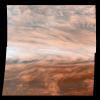
|
-
PIA00574:
-
"True" Color Mosaic of Jupiter's Belt-Zone Boundary
Full Resolution:
TIFF
(1.393 MB)
JPEG
(55.54 kB)
|

|
1997-09-07 |
Europa
|
Galileo
|
Solid-State Imaging
|
630x325x1 |
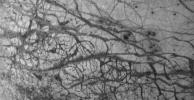
|
-
PIA00578:
-
Europa Ice Floes
Full Resolution:
TIFF
(226.2 kB)
JPEG
(43.25 kB)
|

|
1997-09-07 |
Ganymede
|
Galileo
|
Solid-State Imaging
|
1200x800x1 |
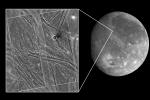
|
-
PIA00579:
-
Ganymede Uruk Sulcus High Resolution Mosaic Shown in Context
Full Resolution:
TIFF
(628.1 kB)
JPEG
(130.6 kB)
|

|
1997-09-07 |
Ganymede
|
Galileo
|
Solid-State Imaging
|
1200x800x1 |
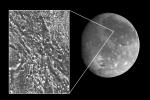
|
-
PIA00580:
-
Ganymede Galileo Regio High Resolution Mosaic Shown in Context
Full Resolution:
TIFF
(593.1 kB)
JPEG
(136 kB)
|

|
1997-12-18 |
Callisto
|
Galileo
|
Solid-State Imaging
|
800x780x1 |
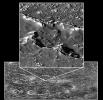
|
-
PIA00581:
-
Callisto Crater Chain at High Resolution Shown in Context
Full Resolution:
TIFF
(462.9 kB)
JPEG
(108.7 kB)
|

|
1998-03-26 |
Jupiter
|
Galileo
|
Near Infrared Mapping Spectrometer
|
1000x800x3 |
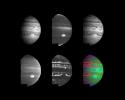
|
-
PIA00582:
-
Jupiter's Multi-level Clouds
Full Resolution:
TIFF
(415.2 kB)
JPEG
(39.65 kB)
|

|
1997-12-18 |
Io
|
Galileo
|
Solid-State Imaging
|
1817x1817x3 |
![Io, the most volcanic body in the solar system is seen in the highest resolution obtained to date [Sept.7 & Nov. 6, 1996] by NASA's Galileo spacecraft.](/thumb/PIA00583.jpg)
|
-
PIA00583:
-
High Resolution Global View of Io
Full Resolution:
TIFF
(9.084 MB)
JPEG
(400.9 kB)
|

|
1998-03-06 |
Io
|
Galileo
|
Solid-State Imaging
|
980x655x3 |
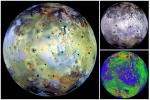
|
-
PIA00584:
-
Global View of Io in various colors
Full Resolution:
TIFF
(1.641 MB)
JPEG
(102.7 kB)
|

|
1997-11-18 |
Io
|
Galileo
|
Solid-State Imaging
|
2284x727x3 |

|
-
PIA00585:
-
Color Global Mosaic of Io
Full Resolution:
TIFF
(5.461 MB)
JPEG
(179.4 kB)
|

 Planetary Data System
Planetary Data System













































































































![Io, the most volcanic body in the solar system is seen in the highest resolution obtained to date [Sept.7 & Nov. 6, 1996] by NASA's Galileo spacecraft.](/thumb/PIA00583.jpg)






